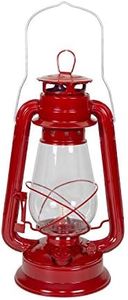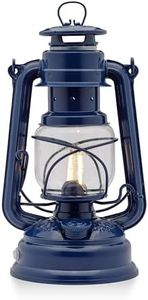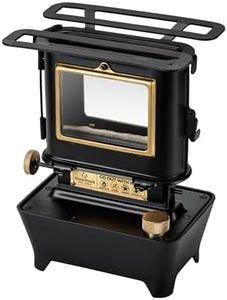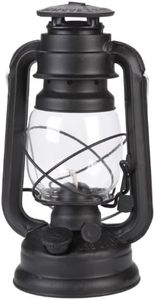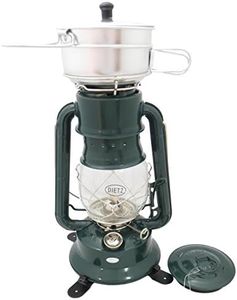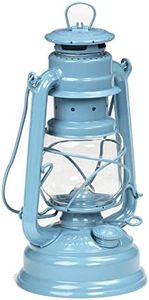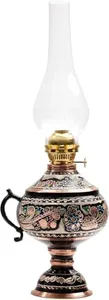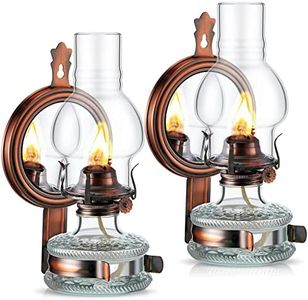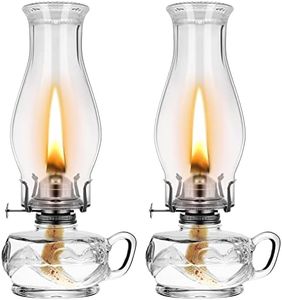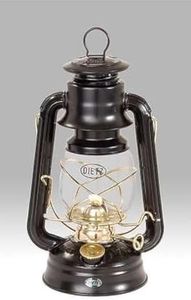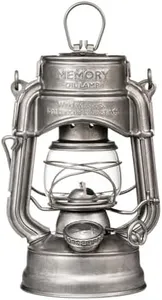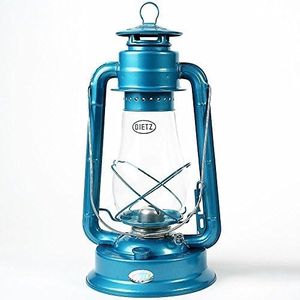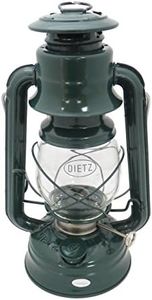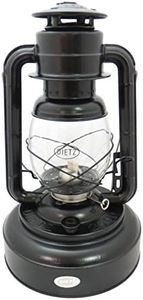10 Best Oil Lanterns 2025 in the United States
Our technology thoroughly searches through the online shopping world, reviewing hundreds of sites. We then process and analyze this information, updating in real-time to bring you the latest top-rated products. This way, you always get the best and most current options available.

Our Top Picks
Winner
Stansport 12" Hurricane Lantern (127), 12inch, Red
The Stansport 12" Hurricane Lantern is a compact and lightweight oil lantern ideal for camping, outdoor activities, and emergencies. It uses kerosene as fuel, which is readily available, making it convenient for most users. The lantern has a metal construction with an alloy steel finish, providing durability and strength. The glass globe is protected by a wire design, adding an extra layer of safety to prevent breakage. Additionally, the adjustable wick allows you to control the flame size and brightness according to your needs.
At 12 inches tall and weighing just 0.9 pounds, it is easy to carry and store. The lantern's safety features include a sturdy build and protective wire design around the glass. Its portability, durability, and ease of use make it a solid choice for those seeking a reliable and straightforward oil lantern for various outdoor and emergency situations.
Customer Highlights
A summary of real customer reviews to highlight what shoppers are saying!FEUERHAND, Lantern, 276, Made in Germany, Cobalt Blue, Camping, Outdoor Use
The Feuerhand Outdoor Kerosene Fuel Lantern is a classic, German-made kerosene lantern ideal for camping, patio use, or emergency lighting. It is designed to be extremely durable and weather-resistant, thanks to its alloy steel construction and thermal heat-resistant SUPRAX globe that prevents cracking even in adverse weather conditions. This makes it a reliable choice for outdoor use. The lantern is capable of holding enough fuel to burn for up to 20 hours, providing consistent light without flickering or sooting, which is a significant advantage for prolonged usage.
Its compact size (10 inches high) and relatively lightweight (1.07 pounds) make it portable and easy to handle. However, its brightness is limited to 3.5 candlepower, which may not be sufficient for those needing intense illumination. Safety-wise, it features a specially developed burner element to prevent common issues like flickering. While it doesn’t require batteries, it does run on kerosene, which could be a downside for users who prefer cleaner power sources.
Additionally, the lantern’s classic design and cobalt blue color add a touch of style to its functionality. This lantern is best suited for users who need a durable, weather-resistant lighting solution for outdoor activities or emergency situations and appreciate classic design, but may not be ideal for those needing high brightness or preferring battery-operated options.
Customer Highlights
A summary of real customer reviews to highlight what shoppers are saying!Thous Winds Camping Oil Lantern, Fuel Lamp for Outdoor Lighting Portable Stove for Cooking Warming, Black
The Thous Winds Camping Oil Lantern is a versatile choice for those seeking reliable outdoor lighting and heating options. One of its major strengths is the durable construction, made from SUS304 stainless steel, which offers excellent corrosion resistance and durability. This makes it suitable for various weather conditions. The lantern boasts a burn time of up to 8 hours on a 400ml oil capacity, meaning you won't need to refill it frequently, adding convenience for long camping trips or outdoor gatherings.
Brightness is decent, although not specified in lumens; the explosion-proof glass allows for safe visibility of the flame, ensuring both safety and an enjoyable ambiance. Its foldable bracket is a thoughtful feature, providing extra convenience when using it for cooking or heating small areas, and it can accommodate larger cookware with ease.
However, there are a few drawbacks to consider. Weighing 2.18 kilograms (4.79 pounds), the lantern is somewhat heavy, which might be cumbersome for backpackers or those looking for ultra-light gear. Additionally, while the design is stylish, the black finish may show fingerprints or smudges over time, requiring more frequent cleaning. It's important to note that the lantern doesn't include batteries, which is typical for oil lamps, but potential buyers should be prepared to source oil separately for it to function. This oil lantern suits outdoor enthusiasts who need a reliable light source and cooking aid, but those needing a lightweight option might want to explore other alternatives.
Customer Highlights
A summary of real customer reviews to highlight what shoppers are saying!Buying Guide for the Best Oil Lanterns
Choosing the right oil lantern can greatly enhance your outdoor adventures, emergency preparedness, or even your home decor. Oil lanterns are versatile, providing reliable light in various situations. When selecting an oil lantern, it's important to consider several key specifications to ensure you get the best fit for your needs. Here are the main factors to consider and how to navigate them.FAQ
Most Popular Categories Right Now
